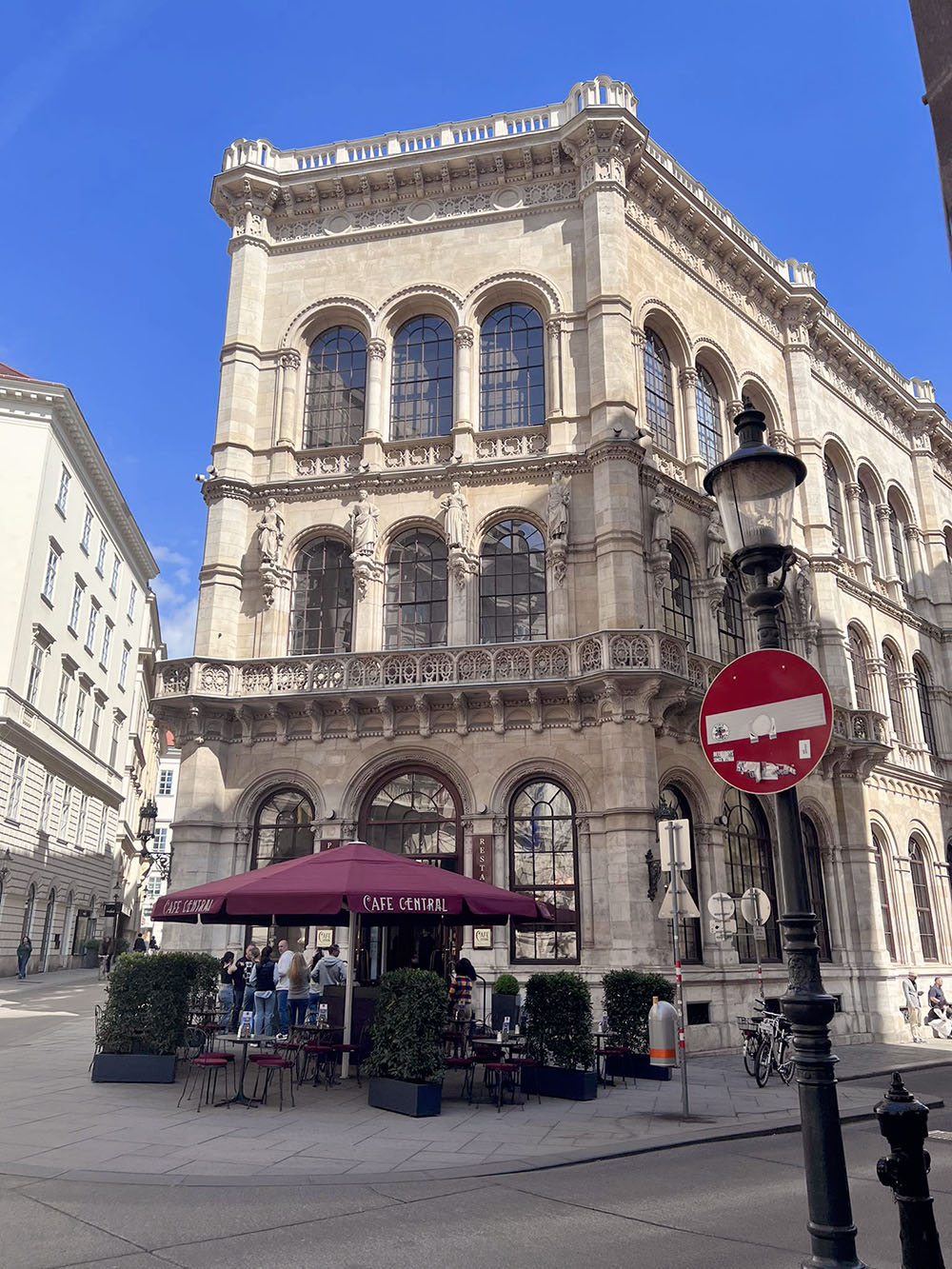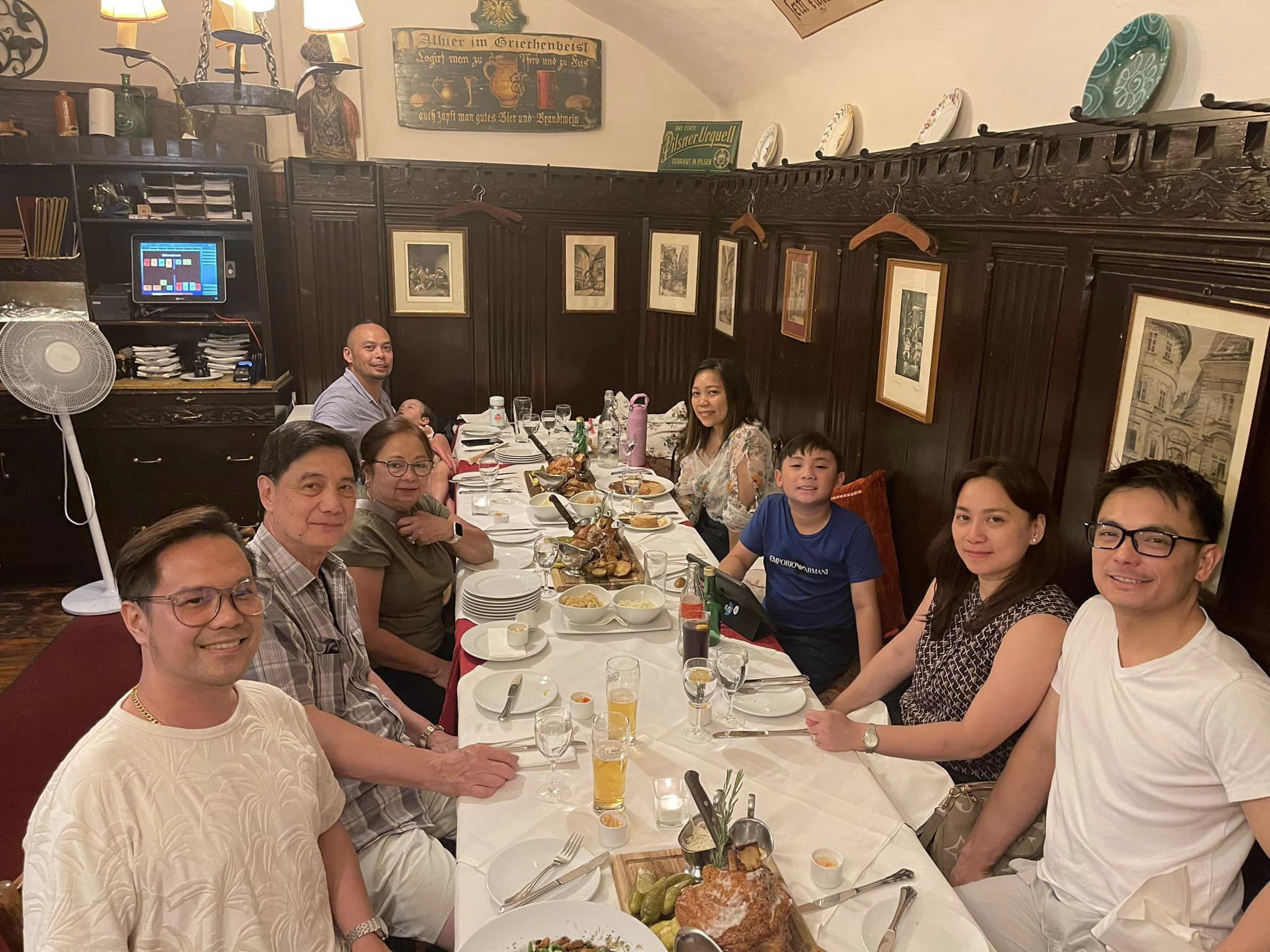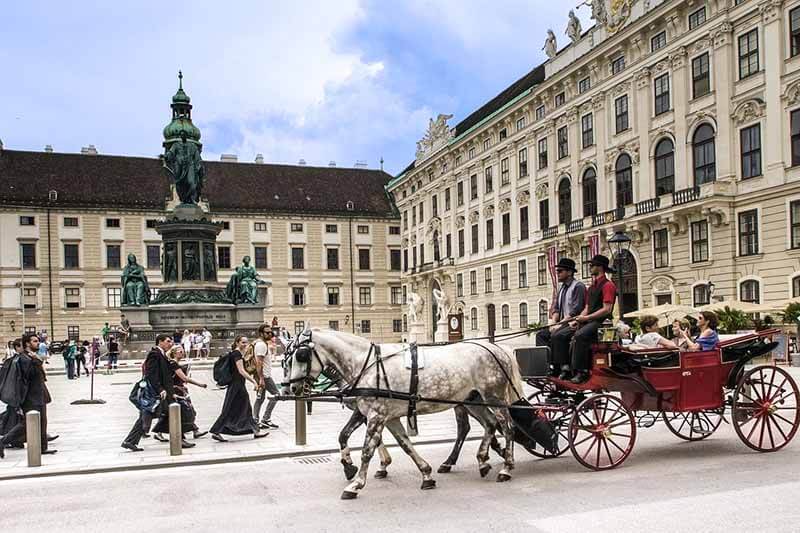
—
Vienna holds a significant place in the culinary world, known for its rich culinary heritage, traditional dishes, and a thriving contemporary food scene. The Viennese (and the Austrian) dining culture is multifaceted, covering a variety of establishments that each offer unique culinary experiences. It’s also the only city in the world known for its significant viticulture.
Vienna is famous for its traditional Austrian cuisine, which includes iconic dishes like Wiener Schnitzel, Tafelspitz, and Sachertorte. The city’s culinary traditions are deeply rooted in its history and culture, offering a unique blend of flavors and techniques. The city is renowned for its historic coffee houses, which are an integral part of Vienna’s culinary and cultural identity.
These establishments serve a variety of coffee specialties and pastries, providing a quintessential Viennese experience. Vienna is a paradise for pastry lovers, home to famous desserts like Apfelstrudel (apple strudel), Kaiserschmarrn, and the world-renowned Sachertorte. The city’s patisseries and bakeries are celebrated for their high-quality and delicious offerings. Thus the term “Viennoiserie.” Viennoiserie refers to a category of baked goods made from yeast-leavened dough, which is often laminated, leading to a flaky, buttery texture. The term originates from the French word for Vienna, “Vienne,” reflecting the influence of Austrian baking traditions on these pastries.
Beyond traditional cuisine, Vienna has a diverse and enjoyable food scene with a wide range of international restaurants, contemporary bistros, and street food markets. This diversity caters to various tastes and preferences, making the city a dynamic culinary destination.

Table of Contents
Here’s a detailed look at the different types of dining venues you can find in Vienna:
Gasthäuser and Gasthöfe (Inns)
Inns, known as Gasthäuser or Gasthöfe, are similar to Beisln but often with a broader menu that can include both Austrian and international dishes. These establishments can range from casual to more refined, often with a family-friendly environment. While traditional Austrian dishes are a staple, many inns also offer seasonal specialties and a variety of international options. Inns are known for their hospitality and are great places for both everyday dining and special occasions, often featuring outdoor seating in summer months.
Beisln (Pubs)
Beisln (singular: Beisl) are traditional Viennese pubs that serve hearty, home-style Austrian cuisine. They are typically cozy, unpretentious, and often characterized by rustic interiors with wooden furniture and a welcoming ambiance. The menu usually includes classic Viennese dishes such as Wiener Schnitzel, Gulasch, Tafelspitz (boiled beef), and various sausages. Beisln are also known for serving substantial portions. Beisln are popular for their relaxed, informal atmosphere and are frequented by locals and tourists alike looking to experience authentic Viennese comfort food.

Restaurants
Vienna’s restaurants range from casual eateries to high-end, Michelin-starred establishments. The atmosphere can vary widely depending on the type of restaurant, from chic and modern to historic and elegant. The culinary offerings in Vienna’s restaurants are diverse, ranging from traditional Austrian, European, and international cuisines. High-end restaurants often feature innovative and contemporary takes on classic dishes. Dining in Vienna’s restaurants can be a luxurious experience, especially in those that emphasize fine dining and offer extensive wine lists. Many restaurants focus on seasonal ingredients and farm-to-table concepts.
.png)
Kaffeehäuser (Coffee Houses)
Viennese coffee houses are iconic institutions, central to the city’s social and cultural life. They are characterized by their elegant, historic interiors with marble-topped tables, plush seating, and often a cozy yet sophisticated ambiance. Many have retained their original 19th-century charm. While coffee is the star, coffee houses also serve a variety of pastries and cakes, such as Apfelstrudel, Sachertorte, and various other sweet treats. Light meals and snacks, such as open-faced sandwiches and soups, are also available. Coffee houses are not just places to grab a coffee; they are social hubs where people read, write, discuss, and relax. They offer a unique cultural experience, providing a space for intellectual exchange and leisure.
Buffet/Imbiss/Kantine (Buffet/Snack bars/Canteens)
Buffet establishments are hospitality establishments that generally have the appearance of a shop (sales counter), with the rooms being equipped in such a way that they only invite people to stay for a short time. They are usually visited by guests who want to consume small snacks, meals and/or alcoholic and/or non-alcoholic drinks over a short period of time.
Imbiss (Snack bars) are establishments that primarily serve snacks and small meals. In terms of furnishings and equipment, they are similar to a restaurant, but usually have a much smaller area. The selection of snacks and drinks on offer is extensive and the quality of what is offered reaches a “higher” standard (than, for example, a buffet). They are therefore intended for a more demanding clientele who want to consume small snacks or meals over a relatively short period of time.
Kantine (Canteens) are establishments in which food and usually also drinks are served (only or mainly) to the company’s employees in the company’s own premises at the usual or reduced prices.

Heuriger/Buschenschank/Weinschenken/Bräu (Tavern/Wine tavern business/Wine bars/Brewery)
Heurigen buffets support and round off the offerings of an agricultural wine tavern and are limited in terms of their operating area exclusively to the buffet area; the exception is the relocation of the wine tavern business, insofar as this is done temporarily, on the occasion of special occasions (folk festivals, street festivals, wine festivals, church fairs and the like) that take place in a Heurigen area.
Buschenschanks (wine tavern business), as the name suggests are establishments that grow grapes in the property to produce their own wine. Buschenschanks can operate on its own while Heurigen buffets may only be operated in conjunction with Buschenschanks. Hot dishes may be served in the Heurigen but only cold dishes may be served in the wine tavern.

Weinschenken (wine bars) have the same appearances as a Heurigen but the serving of alcoholic beverages is mainly focused on wine, which is usually purchased and not produced on the farm itself (as is the case with Buschenschanks). The food served is mainly cold dishes, hot sausages, meat and smoked products, egg dishes, soups and grilled dishes.
Bräu refers to a brewery or a brewpub, the word “Bräu” is short for “Brauerei,” which means brewery. These establishments are often places where beer is brewed on-site and served fresh. They may also offer food, typically traditional Austrian or Viennese cuisine, making them popular spots for both locals and tourists to enjoy locally produced beer along with hearty meals.

Culinary Institutions
No wonder, many dreams of becoming a cook in Vienna (like my older son). While it is not an easy job, it surely is a fulfilling path, especially for those with passion for cooking. Becoming a cook, eventually a chef, in Vienna involves a combination of education, practical experience, and possibly formal certification. Here are the steps one can follow to pursue a culinary career in Vienna:
1. Education and Training
- Vocational School (Berufsschule): In Austria, many aspiring cooks start with a dual education system combining vocational school with apprenticeships. Look for vocational schools in Vienna that offer culinary programs.
- Apprenticeships (Lehre): Apprenticeships are a traditional path, typically lasting three years. You will work in a professional kitchen while attending school part-time.
- Culinary Schools: Consider enrolling in a culinary school or program. Vienna has several culinary schools and institutes that offer comprehensive training.

2. Gaining Experience
- Internships: Seek internships or trainee positions in restaurants, hotels, or catering companies. This provides hands-on experience and exposure to different kitchen environments.
- Entry-Level Positions: Start working in entry-level positions such as a kitchen assistant, line cook, or commis chef to gain practical experience.
3. Certification and Licensing
- Certification: While not always required, obtaining certification can enhance your credentials. The Austrian Economic Chambers (Wirtschaftskammer Österreich) offers certifications for cooks.
- Health and Safety: Ensure familiarity with health and safety regulations in Austria, including hygiene standards and food safety practices.

4. Networking and Job Search
- Networking: Join professional culinary associations and attend culinary events and workshops in Vienna to build a network.
- Job Search: Use job portals, company websites, and local newspapers to find job openings. Vienna has a wonderful culinary scene with opportunities in various establishments.
5. Continuous Learning
- Advanced Training: Consider taking advanced courses or specializations in areas like pastry, international cuisine, or culinary management.
- Stay Updated: Keep up with the latest culinary trends and techniques by attending workshops, reading industry publications, and participating in culinary competitions. Even cooking games have much information to offer. Games may not always be about concocting a new dish, but they can also be about keeping healthy through food.

Resources and Institutions
- WIFI Wien: The Institute for Economic Promotion of the Austrian Economic Chambers offers various training programs.
- Vienna Tourism Board: Provides information about working in Vienna’s hospitality industry.
- Culinary Schools: Some well-known culinary schools in Vienna include Gastronomische Akademie Wien and Die Wiener Kochschule.
Steps to Follow
- Research and Choose a Path: Decide to start with vocational training, an apprenticeship, or a culinary school.
- Apply for Programs: Enroll in a vocational school or culinary institute and apply for apprenticeships or internships.
- Gain Practical Experience: Work in kitchens to build your skills and experience.
- Obtain Certification: Pursue relevant certifications to validate your skills.
- Job Search and Networking: Look for job opportunities and network within the culinary community in Vienna.
- Continue Learning: Engage in continuous professional development to enhance your culinary skills.
By following these steps, one can build a successful career as a cook in Vienna, taking advantage of the city’s rich culinary culture and opportunities.

--------------------------Book your Vienna stay here!--------------------------




Thank goodness I just ate! What a great guide! And my family, on my maternal grandmother’s side, is from Austria! They had music stores in Vienna!
Oh hi! Where? I could probably visit! Yep, When you come by try all these food here! 🙂
Vienna sounds like an amazing place to visit if you love your food. So many different things and places to choose from
Certainly! And also being the city of Coffee and Cakes, you have to have room for dessert 🙂
i love seeing architecture and learning the history of the place each time we travel. This is a kind of destination i would like to go.
Yes, Vienna would both fulfill the requirement of great architecture and good food! ^_^